Tree-rific Britain
Trees represent years of horticultural history and show how nature has changed and adapted over time. Take a look at these 15 trees with incredible stories at their roots
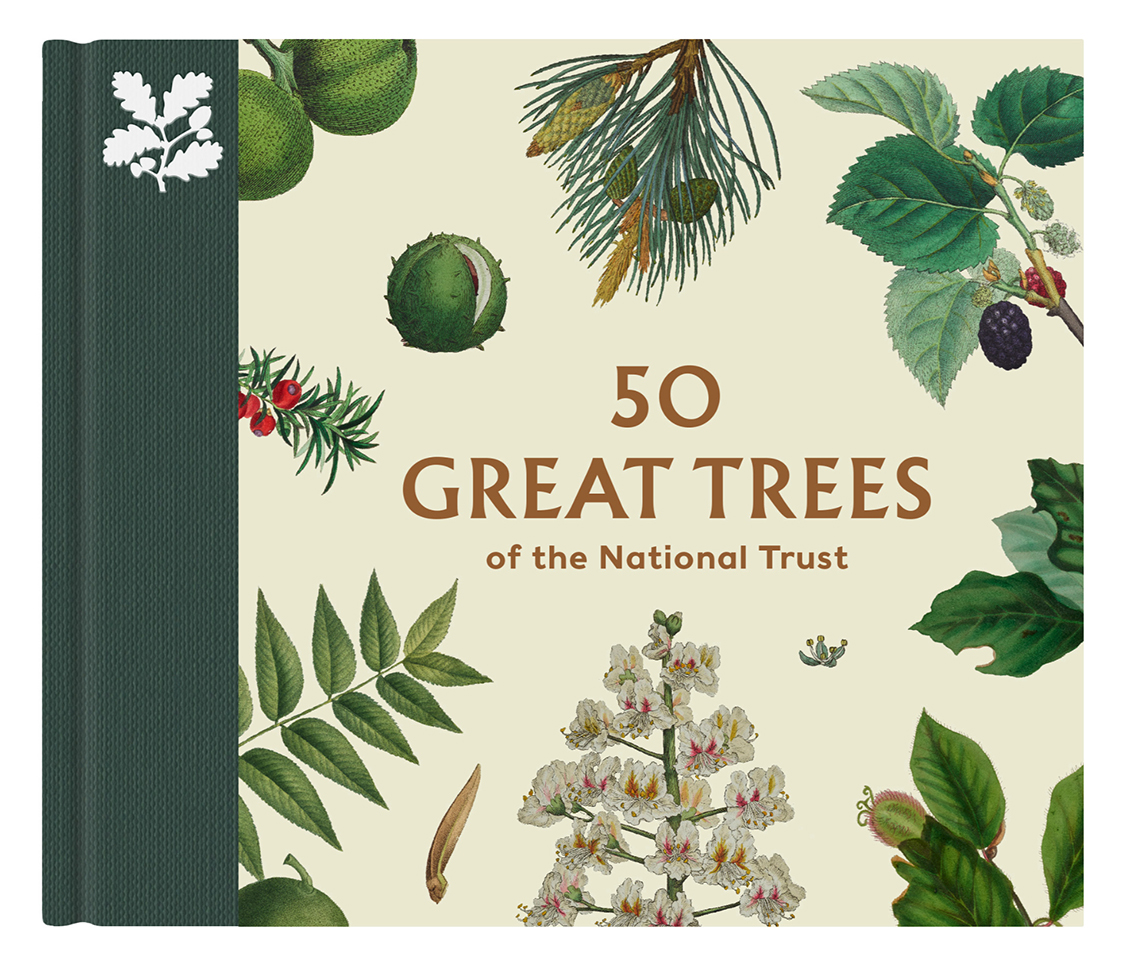 Adapted from the book 50 Great Trees of the National Trust, we’ve collated a selection of beautiful trees, in various locations in the UK and Ireland, that tell an interesting story. It may be that they have won champion status, highlight the impact of climate change, have a connection to notable moments in national or even global history, reflect global exploration having been brought from afar – or simply have a brilliant backstory that shows how incredible they are! From a tulip tree in Glendurgan, Cornwall, and a life weathering storms, to an apple tree in Woolsthorpe Manor said to have helped Isaac Newton form his theory of gravity, and a golden larch that was one of the first to be collected from the wilderness in China and transported to Britain, there are plenty of impressive National Trust trees to learn about and explore.
Adapted from the book 50 Great Trees of the National Trust, we’ve collated a selection of beautiful trees, in various locations in the UK and Ireland, that tell an interesting story. It may be that they have won champion status, highlight the impact of climate change, have a connection to notable moments in national or even global history, reflect global exploration having been brought from afar – or simply have a brilliant backstory that shows how incredible they are! From a tulip tree in Glendurgan, Cornwall, and a life weathering storms, to an apple tree in Woolsthorpe Manor said to have helped Isaac Newton form his theory of gravity, and a golden larch that was one of the first to be collected from the wilderness in China and transported to Britain, there are plenty of impressive National Trust trees to learn about and explore.
Weeping beauty
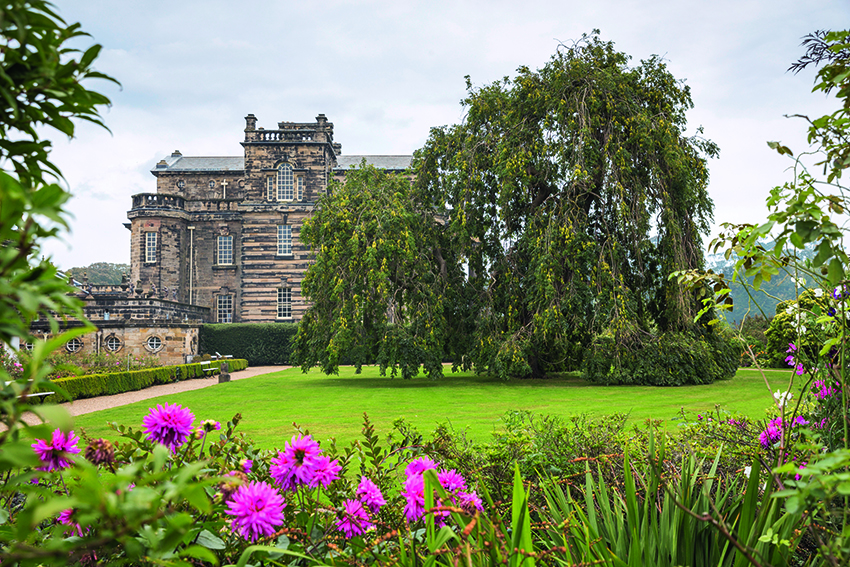
Weeping ash trees lack the hormone-guided instinct to grow towards the light and so, instead, follow gravitational force downwards. If they didn’t appeal so much to novelty-seeking gardeners, few would survive. The British Isles have just one native species of ash. Its wood is strong yet flexible and was used for demanding items from tool handles to hockey sticks. In November 2021, Storm Arwen caused this tree to lose most of its crown and brought down large numbers of trees in the north of England and Wales, demonstrating the risk posed by extreme weather events driven by climate change.
A tree with a view
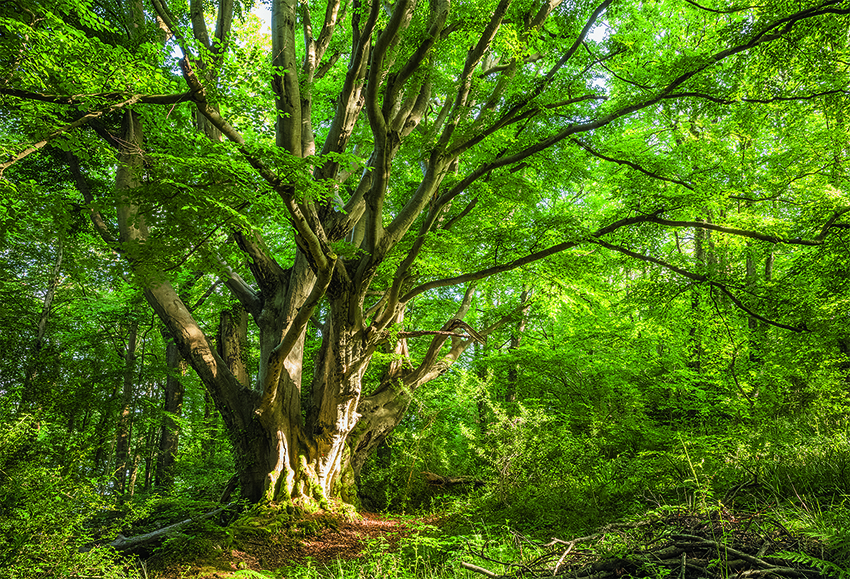
Overlooking the Menai Straits in the woods at Plas Newydd is a tree considered to be the largest beech in the UK – with a girth of around 10m. Not as durable as oak, beech wood is more easily colonised by funghi. However, the black (zone) lines, created where competing colonies meet, are highly prized by furniture makers and wood turners.
Distinguished scholar
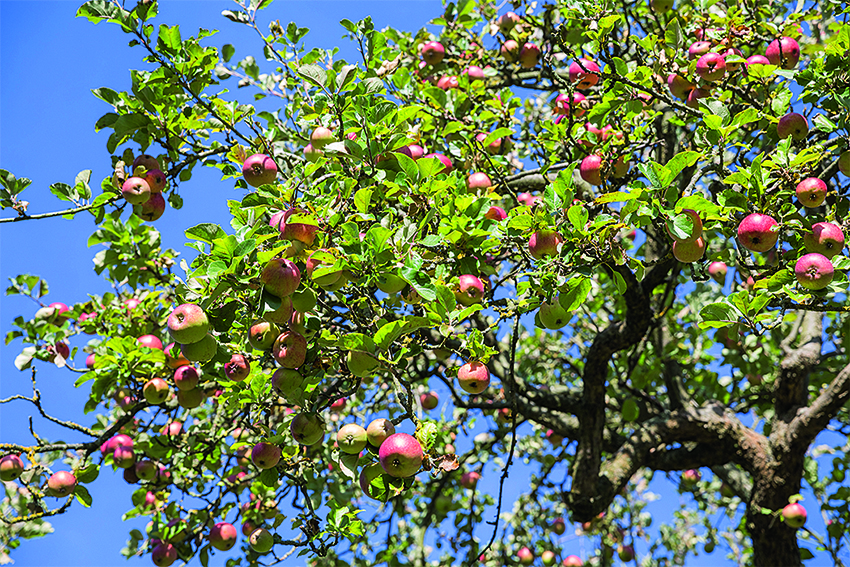
An apple tree in Isaac Newton’s birthplace, Woolsthorpe Manor, is where he must have sat as a young boy, and it’s said to be the falling of an apple from this tree that helped him to formulate his theory of gravity. The tree’s gravitational story continued in 2015 when some of its seeds were sent to the International Space Station and, on their return, were planted in various locations – including one at Woolsthorpe by astronaut Tim Peake.
Tulip tree
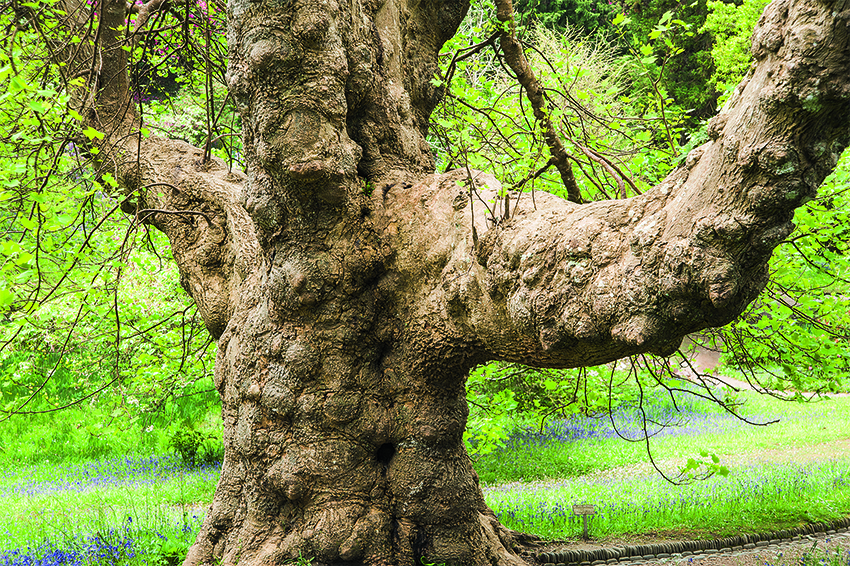
Found in Glendurgan, Cornwall, this tree is evidence of a life spent in the line of storms that sweep in from the sea. With the first-known tree being planted in 1688, and collected by famous botanist and Charles I’s head gardener, the tulip tree was one of the first to be introduced to British gardens from eastern North America and gets its name from its flowers that resemble tulips.
Phoenix tree
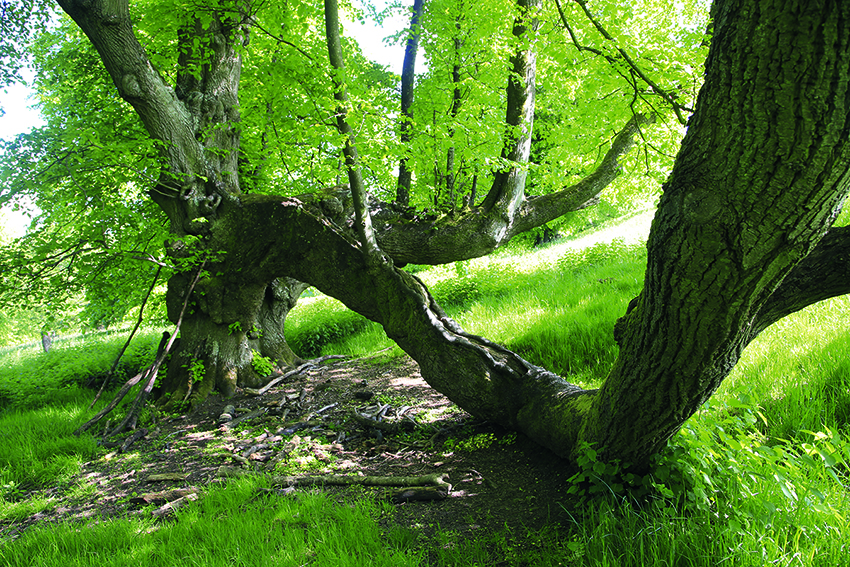
Of the many tall and impressive lime trees in Dyrham Park, the most characterful has one of its long limbs dipping to the ground and vigorously jutting back up, almost in a V-shape. Identifiable by its heart-shaped leaves, in the summer its scented flowers are irresistible to bees – which then create a beautiful lime honey! These trees ‘layer’ – where new roots form when limbs touch the ground – allowing for continuous regeneration.
Time traveller
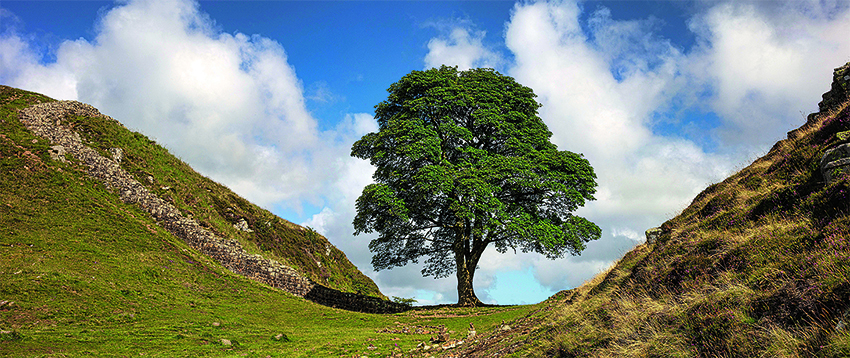
Named England’s Tree of the Year in 2016 by the National Trust, the old sycamore that is settled next to Hadrian’s Wall now has movie credits too – it’s located where Robin Hood: Prince of Thieves was filmed, though sycamore was introduced to Britain around a century after Robin Hood! Trees often present such problems of chronological inconsistency.
Monkey puzzle
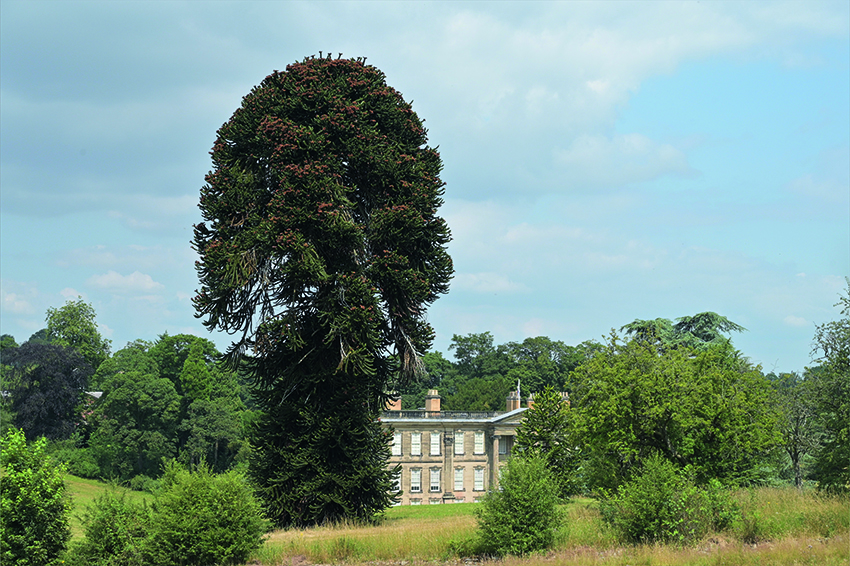
This peculiar- looking plant, like the example here in Calke Abbey, Derbyshire, is said to have gained its name when barrister and socialite, Charles Austin, commented that to climb its branches would puzzle even a monkey. Its strong timber is resistant to decay, making it much sought-after for building bridges, piers and ships. Over-exploitation in the South American forests of its origin means it is now classified as ‘endangered’ by the International Union for the Conservation of Nature. Becoming a hit in the Victorian era, it’s also representative of planting unusual trees as a statement of wealth and status.
A world of its own
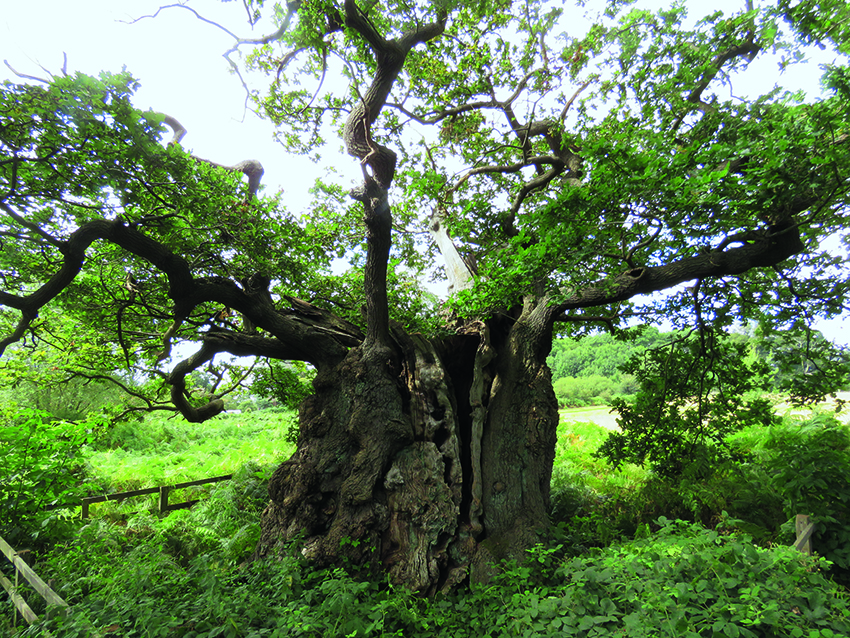
The Old Man of Calke was so called after a competition to name the oldest tree in Calke Park – a designated Nature Reserve since 2006 due to its importance to conservation. Over a millennium in age, and a relic of the ancient wood pasture, ancient and veteran trees like this one are nature reserves themselves, given the variety of habitats found within them.
PHOTOS JAMES DOBSON, SIMON TOOMER, CAROLE DRAKE, STEPHEN FRANKLIN, EMILY MABBOTT AT NATIONAL TRUST, GRAEME PEACOCK/ALAMY

Leave a Reply
Please login or register to leave a comment.